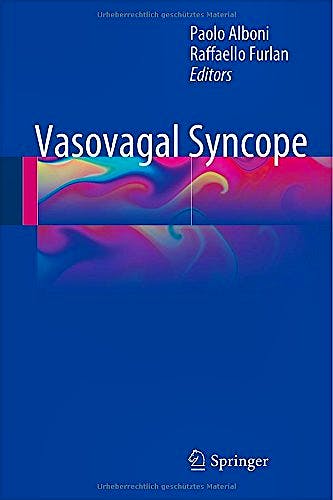

No hay productos en el carrito



Vasovagal Syncope
Alboni, P. — Furlan, R.
1ª Edición Noviembre 2014
Inglés
Tapa dura
326 pags
2765 gr
21 x 27 x null cm
ISBN 9783319091013
Editorial SPRINGER
LIBRO IMPRESO
-5%
103,99 €98,79 €IVA incluido
99,99 €94,99 €IVA no incluido
Recíbelo en un plazo de
2 - 3 semanas
Description
This book is exceptional in being devoted solely to vasovagal syncope (VVS), the most frequent cause of transient loss of consciousness in the general population. All aspects of VVS are covered, including epidemiology, pathophysiology, diagnosis and differential diagnosis, prognosis, therapy and implications for particular activities such as work, driving and physical activity. The context for the book is that about half of the population suffer from this type of loss of consciousness during their lifetime and then often call for general practitioner and/or emergency room assistance. While many pathophysiological aspects of VVS have been clarified, others remain elusive. The diagnosis of VVS may be easy, but it is sometimes challenging. From the therapeutic standpoint, few evidence-based therapies have been established and the large majority of treatments remain unsatisfactory. Vasovagal Syncope presents the latest evidence on all these issues and will be of value for internists, cardiologists, neurologists, emergency physicians and general practitioners.
Features
- Provides up-to-date information on the epidemiology, pathophysiology, diagnosis, prognosis and treatment of vasovagal syncope
- Aims to meet the needs of internists, cardiologists, neurologists, emergency physicians and general practitioners
- Includes helpful summaries of the state of the art in each topic
Table of Contents
PART I – INTRODUCTORY ASPECTS 1 Origin and evolution of the vasovagal reflex.- 2 Vasovagal syncope in the Divine Comedy and the Holy Bible.- 3 Definition and classification of transient loss of consciousness.- 4 Epidemiology of vasovagal syncope.- PART II – PATHOPHYSIOLOGY OF VASOVAGAL SYNCOPE 5 Role of autonomic nervous system.- 6 Role of baroreceptor mechanisms.- 7 Role of adenosine.- 8 Cardiac rhythms in neurally mediated syncope.- 9 Pathophysiology – Conclusive remarks.- PART III – DIAGNOSTIC AND CLINICAL ASPECTS.- 10 Initial evaluation of the patient with transient loss of consciousness.- 11 Clinical presentation and diagnosis of vasovagal syncope.- 12 Examinations in suspected vasovagal syncope PART IV – DIFFERENTIAL DIAGNOSIS.- 13 Differential diagnosis of vasovagal syncope.- 14 Differential diagnosis of peculiar sindromes: Postural tachycardia.- 15 Differential diagnosis of peculiar sindromes: Sick sinus syndrome.- 16 Differential diagnosis of peculiar sindromes: Chronic fatigue syndrome.- 17 Differential diagnosis of peculiar sindromes: Fibromyalgia.- PART V – PROGNOSIS AND TREATMENT 18 Prognosis of vasovagal syncope and risk stratification in the emergency department.- 19 Treatment of vasovagal syncope: Counseling, drugs and counter-pressure manoeuvres.- 20 Role of loop-recorder and pacemaker implantation.- 21 Therapy – Conclusive remarks.- PART VI – SPECIAL ISSUES.- 22 Vasovagal syncope in children.- 23 Vasovagal syncope in the elderly.- 24 Vasovagal syncope during driving, working and physical activity.- 25 Vasovagal syncope and orthostatic intolerance after space flight.- 26 Vasovagal syncope and sudden death: is there a liaison?.
© 2025 Axón Librería S.L.
2.149.0